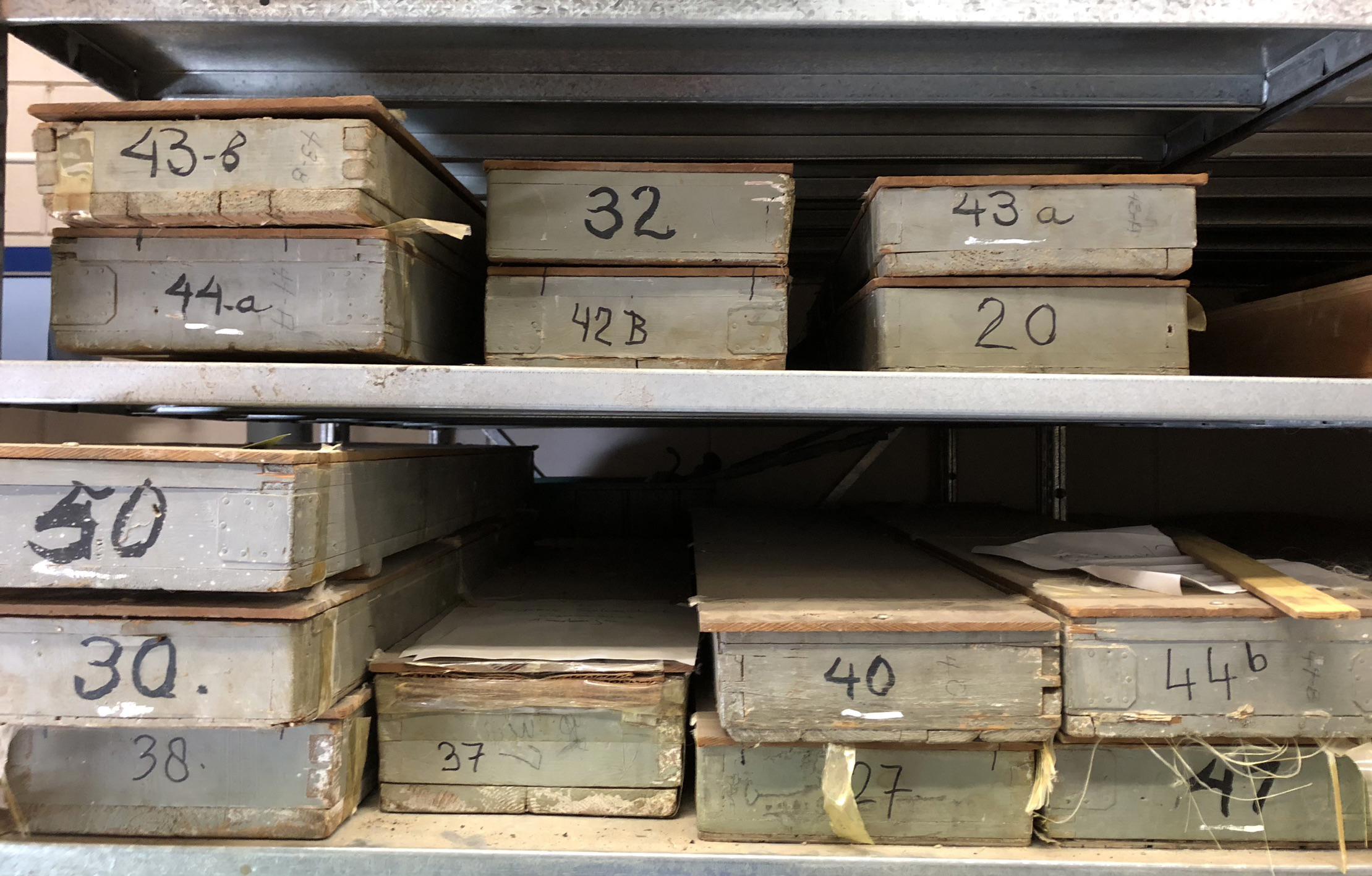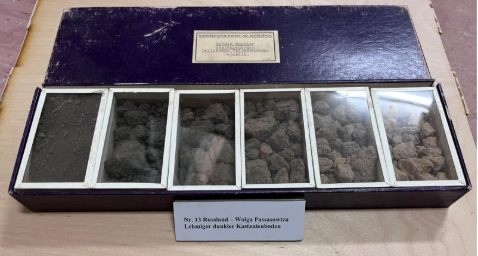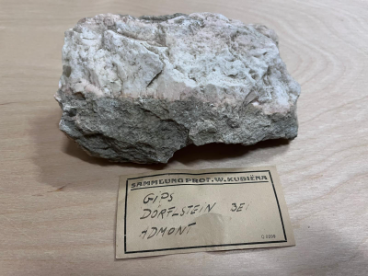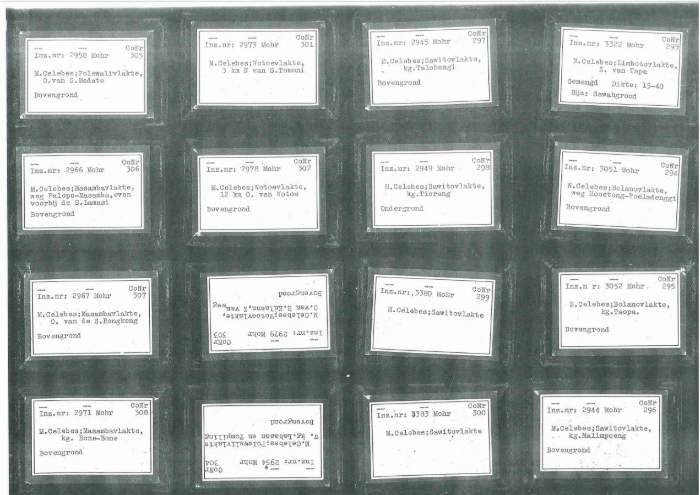ISRIC preserves the various soil collections from great names in Soil Science, the Glinka Memorial Collection, The Kubiena collection and the Mohr collection.


Special soil collections
Glinka Memorial Collection
A collection of some 50 monoliths with an interesting history. The ISRIC World Soil Museum houses 100-year-old soil samples of remarkable historical value. They were collected under the supervision of one of the most famous soil scientists in the world: the Russian professor Konstantin D. Glinka.
Konstantin Glinka, born in 1867, was a student of Vasily Dokuchaev, who is regarded as the founding father of soil science. Glinka made a significant contribution to the dissemination of Russian soil science, as he could speak both English and German. His excellent knowledge of the different soil types in the former Soviet Union, combined with his language skills, contributed to the popularity of this director of the Leningrad Agricultural Institute among the international soil scientific community. Glinka was invited to participate in the first congress, held in 1927 in Washington, of the newly founded International Soil Science Society. In preparation for the congress, Glinka started collecting soil profiles around 1924, from Russia and the countries of the Soviet Union. The soils were sent to the USA and arrived in Washington after a long journey over land and sea. Unfortunately, the congress had already ended by then. Glinka, who was elected the first president of the International Soil Science Association, was therefore unable to exhibit them. After being stored for 70 years in the cellars of the USDA Soil Conservation Service, the profiles were incorporated into the ISRIC World Soil Museum collection 30 years ago.
Kubiëna collection
Walter Ludwig Kubiëna (1897-1970) was an Austrian soil scientist renowned for founding modern soil micromorphology, which involves studying undisturbed soil samples at a microscopic level to understand soil components and their spatial relationships. His foundational 1938 book, "Micropedology," established the study of soil fabric as a new scientific discipline, analysing microscopic features to understand soil genesis, classification, and geography. He conducted extensive fieldwork and microscopic research worldwide, documenting a diverse range of soils from the Arctic to the tropics. The International Union of Soil Sciences (IUSS) awards the Kubiëna Medal annually in his honour for contributions to soil micromorphology.

ISRIC collections hold horizon correlation samples from 11 profiles from Russia, displayed in boxes, along with a Kubiena medal and his field knife.

Mohr collection
E.C.J. Mohr founded, in 1905, the laboratory of agrogeology and soil research (Laboratorium voor Agrogeologie en Grond Onderzoek) in Bogor, associated with the botanical garden in Bogor (West Java). Through his research and mapping of tropical soils in the former Dutch East Indies, now Indonesia, Mohr became one of the pioneers of tropical soil science. He studied the characterisation of the diversity of soils, understanding the genesis of soils (climate, geology, and edaphic factors). Mohr has published in the fields of soil science, geology, petrography, mineralogy, climatology, meteorology, land development and irrigation. In his name, various published maps, reports, and articles appeared. One of his well-known books was written with F.A. van Baren: ‘Tropical Soils’. From 1920, he was affiliated with the Royal Tropical Institute in Amsterdam. In 1927, he was appointed extraordinary professor at Utrecht University, making him the first professor of soil science at a Dutch university.

The Mohr Collection contains 378 small display boxes with soil sample materials, mainly from the former Dutch East Indies and other countries in Southeast Asia, South America, and Africa.